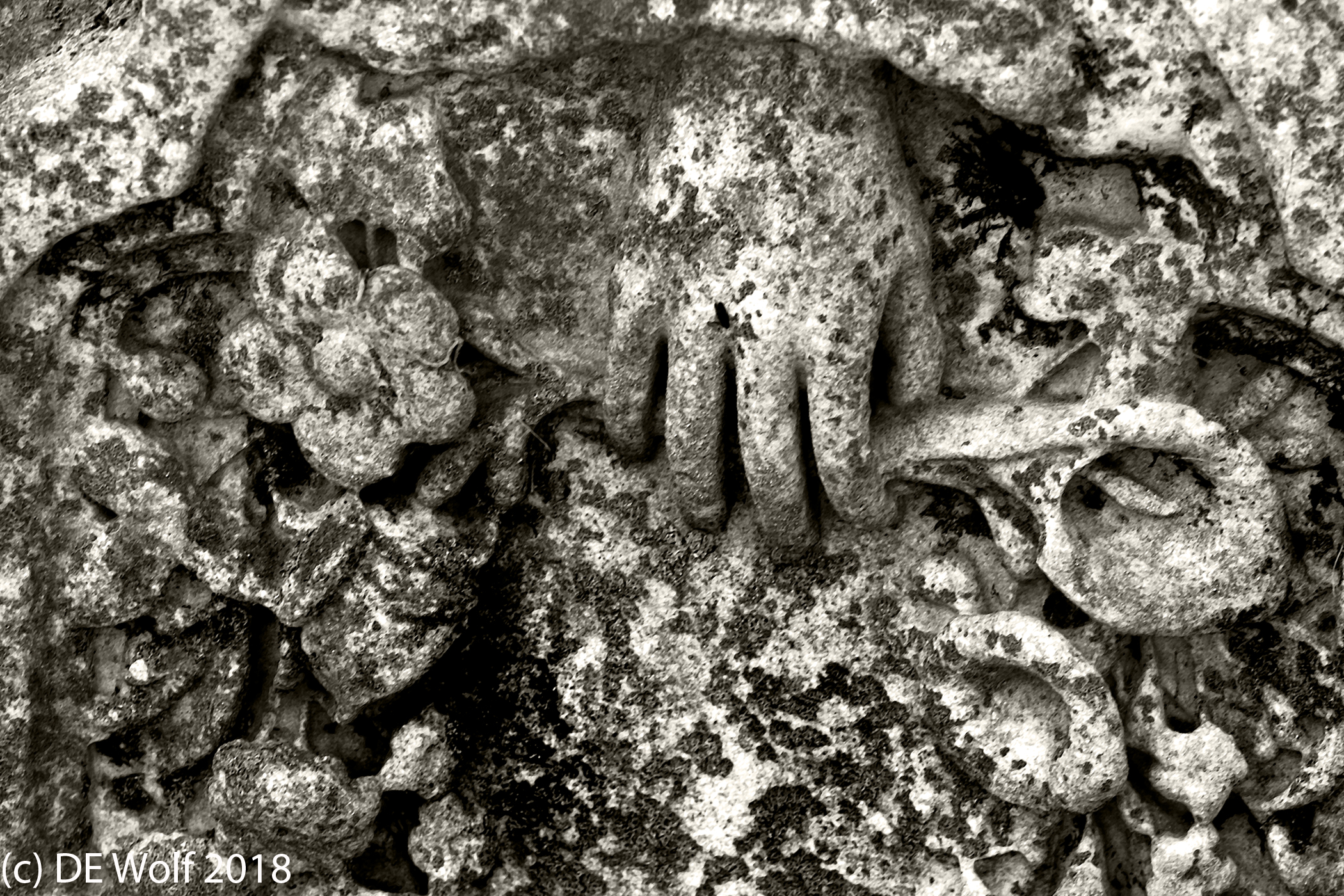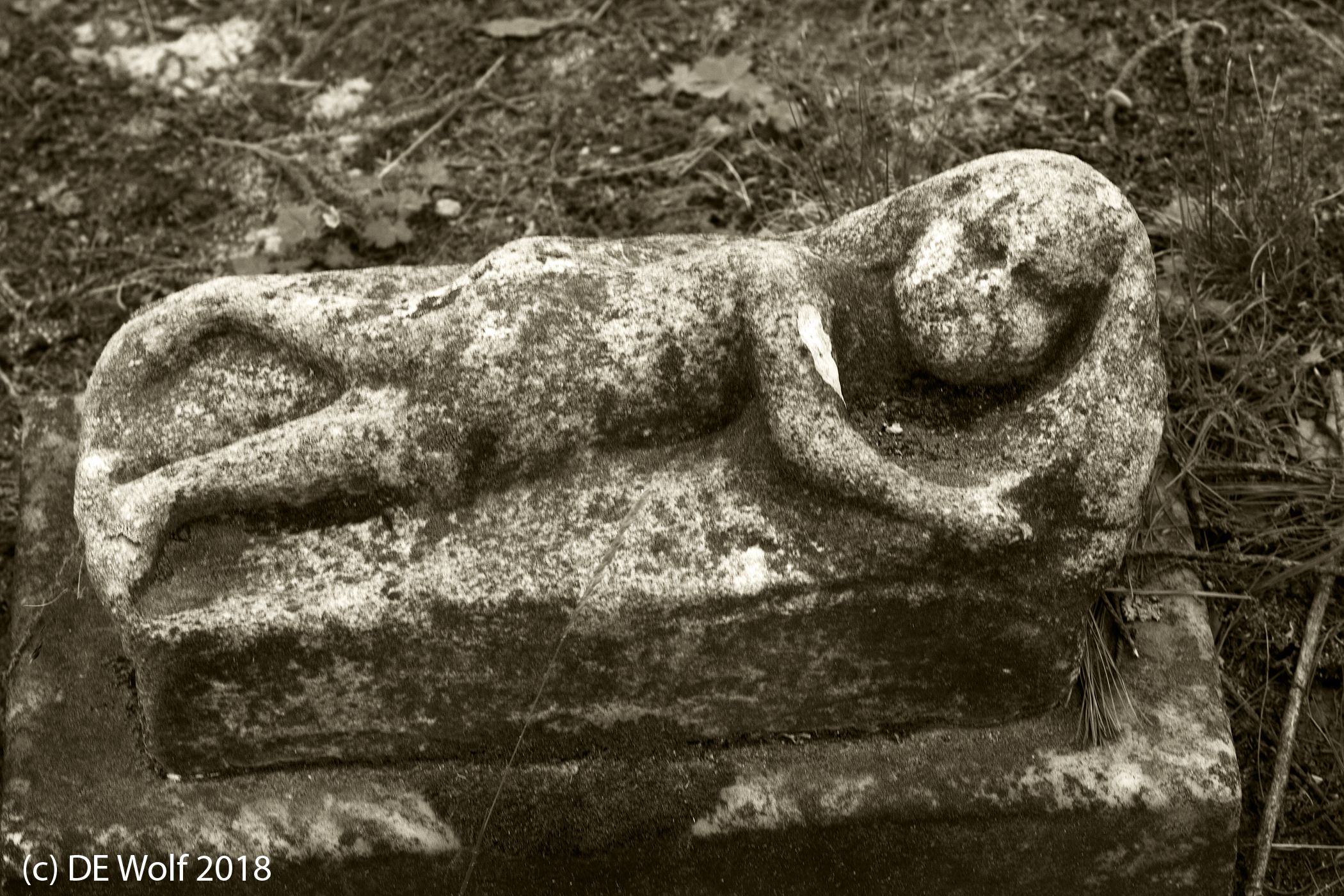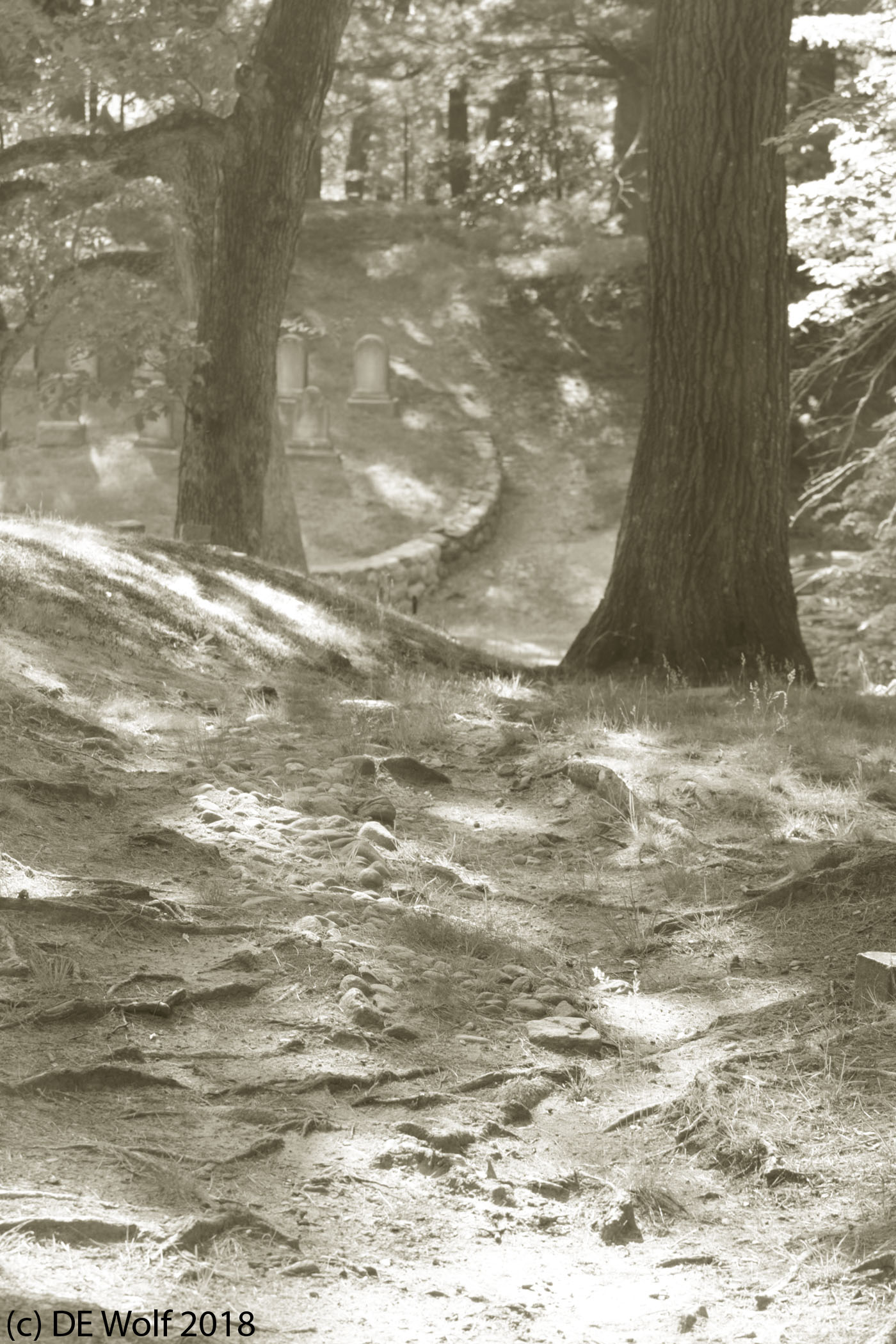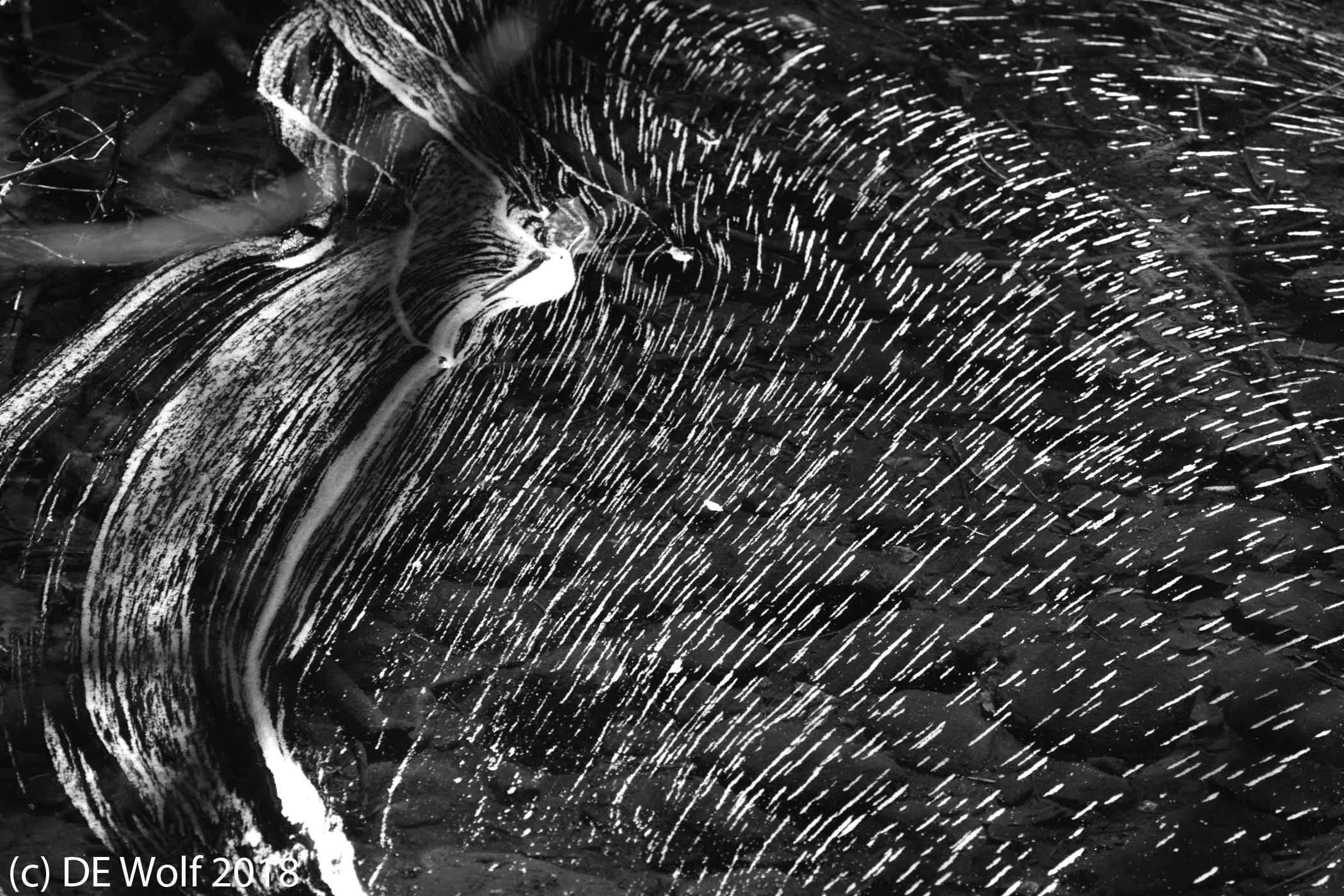
Figure 1 – Gravestone detail, Concord, MA. (c) DE Wolf 2018.
The ancient Greek word for beauty is κάλλος, or anglicized kallos. And from this we derive the name of the calla lily. The calla lily has become in Christian times a symbol of rebirth and resurrection, and hence I found it as a detail of a nineteen century tombstone along author’s ridge at Concord, MA’s historic Sleepy Hollow cemetery. Author’s ridge is a favorite tourist spot. It is where Concord’s great authors Emerson, Thoreau, Louisa May Alcott, and Nathaniel Hawthorne among others rest their final rest. Before my visit school children had left quotes and pencils on each luminary’s grave.
When first carved the stone would have had a virgin, holy, and pure appearance. All of these words are associated with the calla lily. But with the patina of time, the erosion of rain and ice, the dirt, and the lichens the stone has acquired not a new meaning but a more vivid one. The hand seems to come out of the earth, out of the grave, and it clutches the lily as a savior from death and corruption.
The mythic significance of the calla goes back much further than Christian times. It plays a wonderful role in ancient Greek mythologies. It begins with Zeus, the King of the Gods, disguising himself as Amphitryon the husband of Alcmene, while he is out to war. Zeus made love to her after disguising himself as her husband, Amphitryon. He impregnates her with Heracles or in the Roman Hercules. Third points here. First, you will recognize here the story of David and Bathsheba. Second, and as it turns out Amphitryon actually returned the same night and impregnates his wife with his own son, Iphicles. Third, I am not making this up! This unusual event is referred to as heteropaternal superfecundation.
Now, Zeus’ wife, Hera is, not surprisingly, less than pleased with Zeus’ infidelities. And it is in her face that the infant is named Heracles, meaning the glory of Hera. In the case of Heracles, she is determined not to kill him, but rather to make his life as miserable as possible. Hence, for instance, are the labors of Herakles, and more ominously she places two poisonous snakes in his crib. The story of Heracles is very complicated, as befits the epic of a great mythic hero. But what concerns us here is an event that happens early in Heracles’ life. Zeus takes his son by Alcmene and places her at Hera’s breast, while she is asleep. Now, as you might well imagine, suckling at the breast and drinking the milk of a goddess bring with it great superpowers. But Hera awakes and recognizing Heracles pushes him aside and, in so doing, sprays her milk into the sky where it becomes the Milky Way and onto the ground where it forms calla lillies. Calla lilies possess the purity and beauty of the goddess.
Now when Aphrodite (Venus), goddess of love, beauty, and desire, sees the lilies, she becomes incensed with jealousy. To curse their beauty she places a large, yellow, phallic pistil in the middle of each flower. As a result the calla becomes associated on the one hand, through Hera, with beauty and purity, and on the other hand, through, Aphrodite with lust and sexuality.
So Hera is credited with creating the virgin beauty of the calla lilly and she is also credited with creating that most beautiful and humbling of sights, the Milky Way. This brings us full circle to the words of a Concord author, who is buried on Authors Ridge.
“Why should I feel lonely? is not our planet in the Milky Way?”
Henry David Thoreau, Walden
Canon T2i with EF70-200mm f/4L USM lens at 91 mm, ISO 200, Aperture Priority AE Mode, 1/50th sec at f/7.1 with -1 exposure compensation









